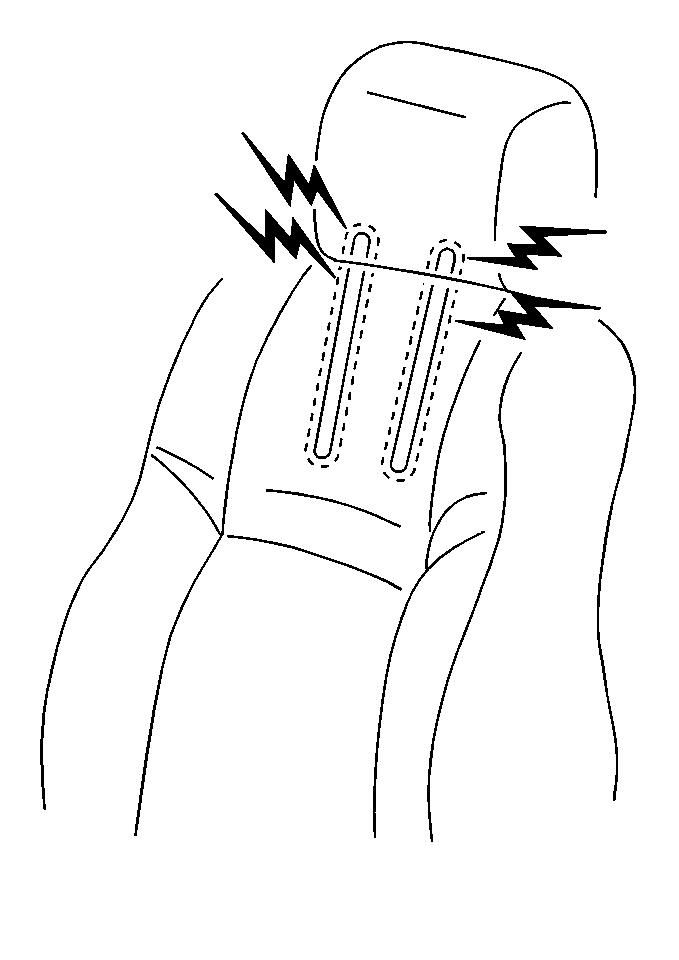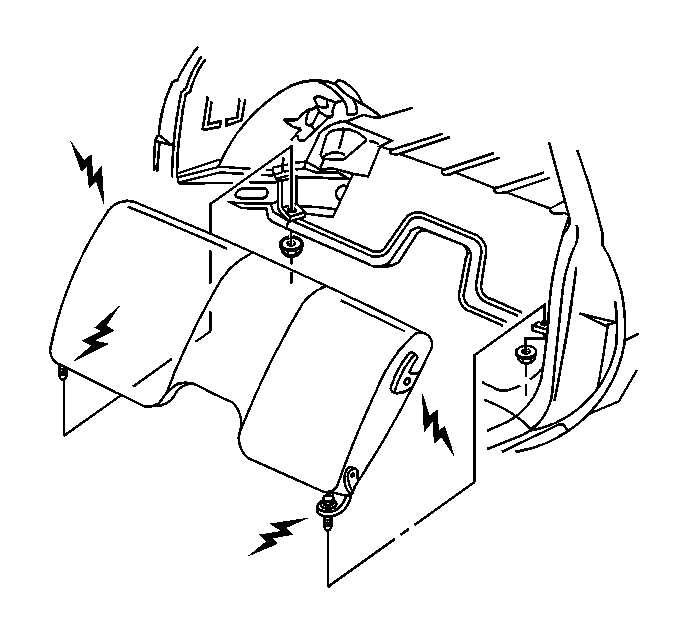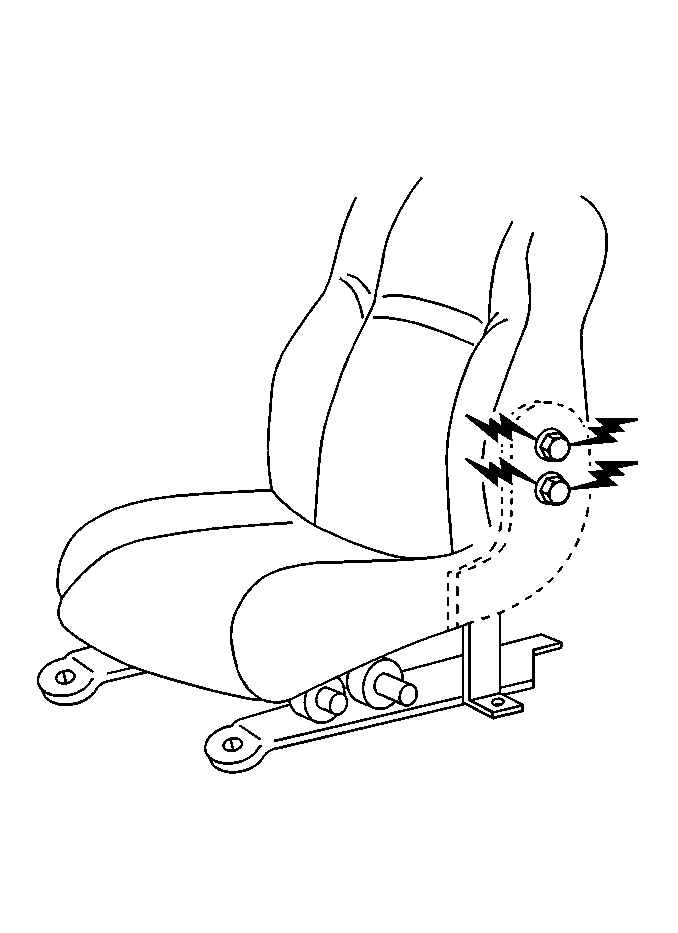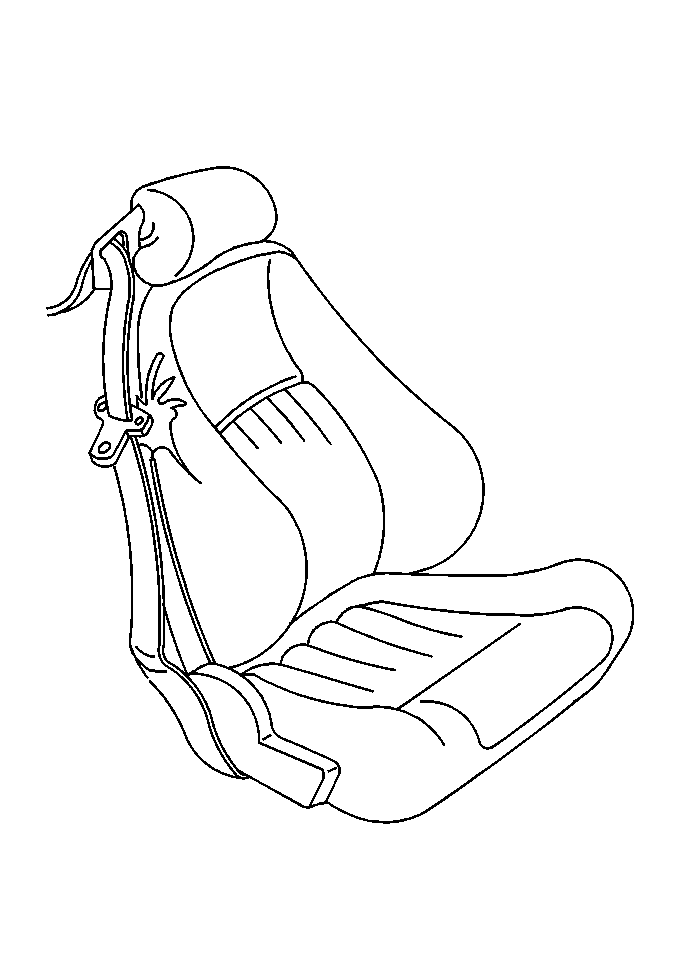Noise Diagnosis - Seat Head Restraint Rattle
Head Restraint Rattle

Symptom:
Rattle coming from the head restraint area.
Possible Cause:
Head restraint posts rattling in the receiver holes.
Diagnosis:
Test drive the vehicle, and apply pressure to the head restraint.
Corrective Action:
| • | Remove the head restraint. |
| • | Bend the posts approximately 25.4 mm (1.0 in) outward. This pre-loads the posts in the receiver holes. |
Noise Diagnosis - Seat Rear Seatback Cushion Rattle
Rear Seatback Cushion Rattle

Symptom
Rattle from the rear seatback rest area.
Possible Cause
| • | Check for the seat belt buckle hitting the seat trim. |
| • | Rear seatback is not in tension against to the striker bolt. This allows the latch to rattle on the striker bolt. |
Diagnosis
Test drive the vehicle, apply pressure to the rear seatback, listen for the rattle.
Corrective Action
| • | Insure that the rear seat is in the proper location (rearward as far as possible). |
| • | Loosen the lower hinge bolt. |
| • | Push the bottom of the seat rearward and apply pressure rearward. |
| • | Retighten the nuts. |
Tighten
Tighten the pivot support nut to 24 N·m (18 lb ft).
| • | Reevaluate. If condition persists, loosen striker and reposition rearward as far as possible. Bend striker with mallet to create and interference fit. |
Noise Diagnosis - Seat Front Seat Creak
Front Seat Creak

Symptom
Creak heard in seat back when occupants weight shifts.
Possible Cause
Seatback hinge recliner bolts not tightened to specifications.
Diagnosis
Check bolt torque.
Corrective Action
Tighten bolt to specifications.
Tighten
Tighten the seatback hinge recliner bolts to 24 N·m (18 lb ft).
Noise Diagnosis - Seat Front Seat Belt Rattle
Front Seat Belt Rattle

Symptom
Rattle from the side of the front seat.
Possible Cause
The seat belt latch rattles against the plastic trim of the seat.
Diagnosis
Visually inspect the seat belt latch and seat for contact.
Corrective Action
Add felt tape to the plastic part of the seat belt latch.
